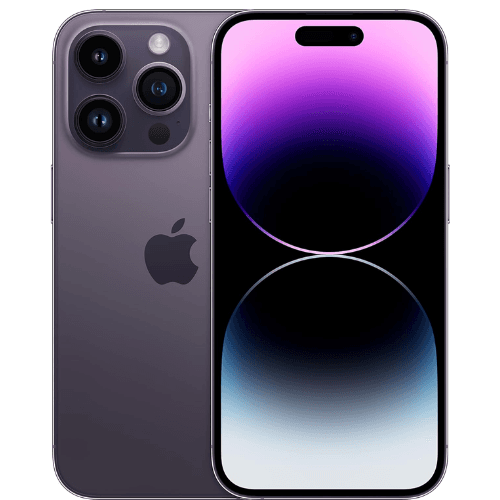Top Pick for
Best iPhone


Top Pick for
Best iPhone

Top Pick for
Best foldable

Top Pick for
Best Samsung Galaxy

Top Pick for
Best Google Pixel

Picking any "best" list of smartphones is an inherently subjective matter, but here at Finder we've tested hundreds of phones over the years; everything from budget models up to the latest premium offerings costing thousands of dollars.
It's largely – but not exclusively – that we draw our list of the very best smartphones that money can buy. You'd naturally expect the most expensive smartphones to have the best features, after all.
Not that value for money doesn't count, however, and there are several high flying models that didn't quite make the grade for our best smartphones list.
Every phone in this list has undergone our rigorous review process. We consider build quality, screen performance, camera features and output, application performance, network performance and battery life across multiple real-world tests and benchmarks to give us a true comparative picture of smartphone performance.
The phone that's best for you might not be the best phone for everyone, so it's always wise to consider your specific needs and budget. Don't need pin-sharp low-light photography? Then a premium-priced phone might not be the best bet for you, because higher-end smartphone cameras are all concentrated in that space.
The same is true for other premium features, including fastest possible 5G performance, foldable displays, telephoto lenses and more.
Get more detail on our methodology below.

Surprisingly, Apple's "best" phone isn't in fact its most expensive model, the iPhone 14 Pro Max.
For our money we'd go for the smaller, slightly less expensive iPhone 14 Pro. It features the exact same exceptional triple lens camera system as the Pro Max model in a more pocket-friendly handset. That smaller size also makes it a lot easier to hold for framing shots – which can lead to much nicer photos. Who doesn't want nicer photos if they can get them while saving money?
It's also not wanting for power, with Apple's new A16 Bionic leaving every other mobile processor in the dust right now. You might struggle to actually use all of that power, but it's always great to have headroom for further app expansions, and to maintain iOS upgrade compatibility for as long as possible.
New this year is the removal of the classic iPhone "notch" in favour of the "dynamic island". This is an animated area around the front FaceID cameras that changes depending on your activity. It might seem like a gimmick, but it's very handy to have music playback showing there, or timers, or to clearly indicate when you've made an Apple Pay purchase.
On the downside, this is a current generation iPhone, and while it's cheaper than the iPhone 14 Pro Max, that's still a very long distance from "cheap" by any measure.
The A16 Bionic is super powerful, but it might be overkill for everyday iPhone users. We also hit some issues with the iPhone 14 Pro becoming notably warm if charged with a Qi wireless charger in our tests.
Read our full iPhone 14 Pro review

Samsung's flagship Galaxy S range didn't change that much visually across the Galaxy S23, Galaxy S23+ or Galaxy S23 Ultra, the true "flagship" of the South Korean company's 2023 range.
But like your mother always told you, it's what's inside that counts, and here Samsung's made some significant improvements. It starts with the Snapdragon 8 Gen 2 For Galaxy SoC. It's like the regular Snapdragon 8 Gen 2 – which is to say it's very fast – but actually even faster, with overclocked CPU and GPU cores for even more grunt.
Speaking of more grunt, Samsung's also gone all out on the camera front, packing in an all-new primary 200MP wide sensor into the Galaxy S23 Ultra.
Is that just marketing overkill?
Not entirely. You're not likely to shoot too many 200MP shots on it, but it does allow for a lot of cropping as well as significantly improved low light performance across a range of tests. Samsung's trailled the likes of Apple and Google in low light for a while now, so it's great to see it come charging back and take the lead here.
It also technically takes the lead in zoom, with up to 100x "Space Zoom" capabilities. Sadly like prior years, this is a feature with diminishing results the more you zoom in, especially if you're shooting without a tripod.
While the battery capacity at 5,000mAh hasn't changed, its actual battery endurance has improved a lot over prior flagship models, which is also pleasing.
Like the Galaxy S22 Ultra before it, it's also S-Pen compatible, with Samsung's unique stylus nestled nicely within its phone body.
Read our comprehensive Samsung Galaxy S23 Ultra review here

The top three best smartphones right now are very close in overall value terms, although obviously there's a decision to be made as to whether or not you want to sit in the Apple or Google camps.
Google's Pixel 7 Pro is an excellent phone in its own right, and it's very close between it and the Galaxy S23 Ultra, especially considering the Pixel 7 Pro's very competitive pricing. If you want the value pick for flagship Android phones right now, this is it.
Google runs the Pixel 7 Pro on its own Tensor processor G2, and while it can't quite run neck and neck with Apple's own silicon or the best from Qualcomm or MediaTek, it's a solid performer.
It's also backed up by guaranteed first access to Google security and OS upgrades for many years to come. It's also the only phone you can buy right now with full mmWave and sub-6Ghz 5G compatibility in Australia.
Where the Pixel 7 Pro really impressed was with its camera flexibility, from super-sharp and easy to take macro shots all the way out to surprisingly good 30x zoom photos. It's also a dab hand at low light photography, or even astrophotography if you've got a tripod handy.
The Google Pixel 7 Pro comes in a range of three colour finishes, but one of the issues here is that it's a super slippery phone, so a solid case is very advisable if you're keen. It provides in-display fingerprint unlocking, which works fine, as well as a much less secure face unlock feature, which does work, but could be fooled rather more easily than Apple's FaceID implementation.
Read our full Google Pixel 7 Pro review

Apple's iPhone 14 Pro Max is a seriously expensive handset. When a smartphone costs as much (or more) than a MacBook Air, it's got some serious work to do in order to impress us.
This is something that the iPhone 14 Pro Max generally does.
Its larger sized screen is an attractive proposition to start with, and the inclusion of the new "Dynamic Island" holepunch camera makes the most of that screen size.
On the larger 6.7 inch display of the iPhone 14 Pro Max, it's less intrusive because there's more actual screen around it compared to the iPhone 14 Pro.
The larger body of the iPhone 14 Pro Max also allows Apple to cram more battery capacity into its body. That led to to the best battery life we've seen in any iPhone to date, or indeed any phone, period.
It just keeps going and going, and while the A16 Bionic that lies in its rapidly beating heart is a performance beast, it doesn't seem to affect battery life all that much at all.
So what's not to like and why isn't it our top phone?
The price does hurt no matter how you frame it, and it's well worth considering that the iPhone 14 Pro is the same device save for the larger screen and battery.
If a large screen matters to you, that's also a feature of the iPhone 14 Plus, although not with full 120Hz support or the A16 Bionic under its hood.
Finally, that larger size does make it a trickier phone to use for camera work compared to the iPhone 14 Pro – even though it can produce some stunning photos.
Read our full iPhone 14 Pro Max review

The Pixel 7 is the smaller sibling of the excellent Pixel 7 Pro. In its own right it's a good choice if you favour smaller phones but don't want to particularly compromise on processing power, because it's packing the same Tensor G2 processor as its bigger brother.
That's notably impressive given that it's that rare flagship phone that can be yours for less than $1,000 in its lowest storage configuration. You truly don’t have to pay more for flagship-class performance with the Pixel 7.
It doesn't quite have the camera chops of the Pixel 7 Pro however, with just dual wide/ultrawide at the rear.
Google's smart AI-assisted camera tech comes to the rescue to an extent. As long as you can get by without telephoto shots, the Pixel 7 can deliver some really pleasing shots.
Like any Pixel phone ever, it's blessed with a clean UI and the promise of multi-year OS and security upgrades. As those upgrades come from Google itself, you can expect to see them on the Pixel 7 well before they hit other maker's Android phones.
Like the Pixel 7 Pro, the casing on the Pixel 7 is seriously slippery, and that's a big issue for keeping it in your hand and not flying towards the floor, although its smaller size does help to an extent there.
It's also worth considering that while the Pixel 7 is nicely affordable for a flagship, the Pixel 7 Pro doesn't cost that much more – and it's quite a bit nicer.
Read our full Google Pixel 7 review

It's been a few years since we've had a Pixel "a" series phone in the local market. Where Google once sold cheap phones under the Nexus brand, it switched to Pixel A variants to provide a more affordable entry point into its interpretation of what an Android phone could be.
The Pixel 6a sits very much in opposition to the iPhone SE 2022, but we'd pick the Pixel over the iPhone at this price unless you’re welded into the Apple ecosystem.
Why? Mostly because the Pixel manages significantly better battery life. It also doesn't hurt that it's running the same Tensor processor as 2021's Pixel 6/Pro phones, either.
As with all Pixel phones, you get guaranteed fast Android OS upgrades and a clean UI experience as well, all for a much lower price than the flagship Pixel 7 or Pixel 7 Pro phones.
What's not to like? The primary display is only a simple 60Hz model, and plenty of mid-range phones at this price manage 90Hz or even 120Hz displays these days.
There's no wireless charging on board, and the design, while it apes that of the bigger Pixels, is on the plain and plastic side.

Apple doesn't "do" cheap… or does it? The iPhone SE line has always been about affordability, and while Apple has yet to plumb the depths of true budget phones, the iPhone SE 2022 certainly provides a lot for your mid-range money.
That's headed up by the inclusion of the A15 Bionic processor, which means it's got DNA in common with the iPhone 14 and iPhone 14 Plus, albeit with slightly fewer processing cores on board. Still, it's an insanely powerful device, far more powerful than anything else you can get at this price point including the Pixel 6a.
Where that does struggle however is in the power demands of that processor.
The iPhone SE 2022 is built on the old iPhone 8 chassis, and that's a smaller phone with a smaller screen and critically a much smaller battery.
Like the iPhone 13 Mini, you'll often struggle to get through a full day's usage with the iPhone SE 2022 before you're reaching for a charger. Being built around the iPhone 8 also means that it's not a strong camera performer, even with the post-processing grunt of the A15 Bionic in play.
Read our full iPhone SE 2022 review

Samsung remains the go-to firm if you want a foldable phone right now. In its fourth iteration of its larger foldable, the Galaxy Z Fold4 shows how far Samsung has come, offering up some sweet refinements on top of the already impressive Galaxy Z Fold3.
These include a revamped user interface that makes it a lot easier to multi-task on the expanded display. The highlight here is a task bar for recently used apps making it easier to make the most out of the larger internal display.
Samsung has also improved the Z Fold4’s cameras for low light sensitivity, though the Galaxy S23 Ultra is still a much better camera phone.
Battery life is also substantially improved over older Samsung's foldables. It's also compatible with Samsung's S-Pen accessories – with a couple of catches.
Unlike the Galaxy S23 Ultra, an S-Pen isn't included, so you'll have to pay extra for it. Extra you will pay even if you're a long-term note user, because the Galaxy Z Fold4's flexible screen doesn't play at all well with older S-Pen devices.
The Galaxy Z Fold4 is a pricey proposition, and that will put it out of the reach of most, although you may be able to get a discount in the coming months. Based on prior years, we can expect the Galaxy Z Fold5 to break cover around mid-year – at which point retailers will likely be clearing their older Galaxy Z Fold4 stock at bargain rates.
Read our full Samsung Galaxy Z Fold 4 review

Apple notably did not opt to continue producing "Mini" iPhones after the iPhone 13 Mini, instead opting to go bigger with the iPhone 14 Plus.
However, it's still selling the iPhone 13 Mini, and at a slightly reduced price no less as it's no longer the "current" flagship generation phone.
That may not matter, however, as it shares the same core A15 Bionic processor as 2022's regular iPhone 14 and iPhone 14 Plus on board in a more compact form factor that is equally charming and easy to grab in one hand.
If you hate the trend towards larger and larger phones and don't want a power compromise, the iPhone 13 Mini should absolutely be your next handset.
The big catch with the iPhone 13 Mini is its battery life, which is not good. Unless your usage is very moderate, you're likely going to need a charger to keep it humming along before the day is out.
Read our full iPhone 13 Mini review

Gaming phones are their own distinct niche, and it’s not exactly a surprise to see Asus dominating in this space. The Asus ROG Phone 6D Ultimate is a big old beast of a handset, with a 6.78 inch 165Hz capable AMOLED display, but that’s not where its size stops. Asus also sells a range of additional accessories from cooling fans to full on game controllers that turn the ROG Phone 6D Ultimate into something that looks like a cyborg Nintendo Switch.
Gaming is the absolute focus of the ROG Phone 6D Ultimate, from those optional accessories to the “Air Trigger” pressure sensitive sides designed to be in-game buttons and Asus’ own game optimisation software built on top of Android. And of course, there’s even an animated section on the back of the phone to show off your true gamer credentials, because why not?
As a gaming phone the ROG Phone 6D Ultimate has few peers beside the Samsung Galaxy S23 Ultra, but there are some drawbacks. It’s an expensive handset, for a start, especially if you opt for all the extra accessories. Unlike other flagships it’s not fully IP-rated for water immersion, though it should survive a rain shower… maybe.
It’s also equipped with some pretty ordinary cameras if you fancy taking a quick Instagram shot of yourself after winning that latest online match.
Read our full Asus ROG Phone 6D Ultimate review
 Phonebot
Phonebot
Up to $950 off entire refurbished tech range
Save up to $950 on selected smartphones, tablets, laptops and wearable tech from Apple, Samsung, Google Pixel, Motorola and more at Phonebot. Limited time offer and while stocks last. T&Cs, exclusions apply.
 Samsung
Samsung
Up to $2,000 off at Samsung: Black Friday Sale
Ends
Save big this Black Friday with up to $2,000 off top Samsung tech, including smartphones, TVs, appliances, laptops, and more. Upgrade your home and devices for less. Valid for a limited time only. T&Cs apply.
 Temu
Temu
Up to 25% off Mobile Phones
Discounts applied at checkout. Valid for a limited time only at Temu. Exclusions, T&Cs apply.
 Phonebot
Phonebot
Refurbished iPhones from $99
Buy fully working, Grade A refurbished Apple iPhones from Phonebot for as little as $99. T&Cs apply.
 The Good Guys
The Good Guys
Extra 20% off clearance sale
Get extra savings on clearance items including kitchen and cooking appliances, phones, tablets, computers, and more. While stocks last. T&Cs apply.
 The Good Guys
The Good Guys
Up to $100 off mobile phones
Enjoy great discounts on mobile phones when you shop at The Good Guys. Hurry before stocks run out. T&Cs apply.
 The Good Guys
The Good Guys
Up to 25% off mobile phones & smart phones
Shop up to 25% off mobile phones & smartphones like Apple, Samsung, TCL, Motorola, and more. While stocks last. T&Cs apply.
 The Good Guys
The Good Guys
Apple iPhones from $728
Get Apple iPhones from $728 at The Good Guys while stocks last. T&Cs apply.
 Kogan
Kogan
Up to 61% off Apple iPhones
Get up to 61% off Apple iPhones at Kogan and experience premium performance for less. Whether you're upgrading or gifting, now's the perfect time to save big on iconic tech. Limited-time offer. T&Cs apply.
 Phonebot
Phonebot
Up to 50% off Apple iPhones
Shop and get up to 50% off Apple iPhones at Phonebot while stocks last. T&Cs apply.
 Amazon
Amazon
Up to 28% off mobile phones & smart phones
Shop up to 28% off mobile phones & smartphones like Apple, Samsung, Nokia, Motorola, and more. While stocks last. T&Cs apply.
 Amazon
Amazon
iPhones from $887
Shop for iPhones and other Apple products and accessories at Amazon. While stocks last. T&Cs apply.
 Fruugo Australia
Fruugo Australia
Up to 72% off electronics & electrical
Shop mobile phones, gadgets, accessories and more at Fruugo and score big savings. Hurry while stocks last. T&Cs apply.
 MyDeal
MyDeal
Up to $349 off selected mobile phones
Shop and save on selected mobile phones from Apple, Samung, Nokia, Google Phones, and more at MyDeal. T&Cs apply.
 Lenovo
Lenovo
Up to 33% off Lenovo Tablets and Motorola phones
Save up to 33% on Lenovo tablets and Motorola phones. Enjoy discounts on popular models like the Lenovo Tab M11 and Motorola smartphones. Valid for a limited time only and while stocks last. T&Cs apply.
 Kogan
Kogan
Up to 25% off Apple iPhones for FIRST members
Get up to 25% off Apple iPhones for FIRST members at Kogan while stocks last. T&Cs apply.
 Lenovo
Lenovo
Extra 5% off your first purchase at Lenovo
Sign up for Lenovo's newsletter and get an extra 5% off your first purchase of computers, tablets, phones and accessories at Lenovo. T&Cs apply.
Compare the display size, battery, overall rating and purchasing options of each phone in the table below. (Click on "View details" for more product specifications.)
We've assembled this list based on the extensive reviews we've on every phone made available to us for review. That's the vast majority of handsets that Australians can actually buy.
Each phone is tested and has its own review at Finder.
When assembling this list, we take into consideration not only the review and handset itself but also its position in the market at the point of time of writing.
There are always newer and faster handsets emerging in the best phones space, but it's not just a question of having the fastest processor.
We also evaluate the shortcomings of each handset, including any issues found with displays, cameras, application performance, software updates or battery life.
The final step is to evaluate the phone based on typical market pricing. Over time, most Android phones tend to dip in price, while it's much rarer to see true bargains for Apple iPhone handsets while they're still sold as the current flagship model.
We leave price until last because, while it's probably the first detail you think of, pricing shifts over time, so it's entirely feasible that a phone that was "expensive" at one time becomes more "affordable" over time – and as a result better value.
However, its core feature set, examined above, won't markedly change outside of software upgrades and bug fixes.
We constantly review new smartphones as they become available and update this list based on new models and whether they're worthy of inclusion in this list.
If a phone sits in our best phones list, you can be assured that it's a quality model. It's always worth reading our full reviews of each handset before making your purchase decision because everyone's needs, wants and budgets will be slightly different.
Because smartphones are an ingrained part of pretty much everyone's life right now, the odds are good that if you're looking to buy a new mobile phone, it's because it's an upgrade from your existing handset. Here's what you should consider when picking between the best phones – or indeed any mobile phone handset you might want to buy.
Many premium phones opt for very large screens, typically 6.5 inches or more. You get a lot more display, which is great for games or Netflix binges, but you do need to weigh that up – quite literally. A larger phone won't suit smaller hands, and it's also going to be heavier to hold for longer periods of time. Thankfully, there are some smaller but still powerful options available, so if you do want to go compact, consider models like the iPhone 13 Mini or Google Pixel 6a.
In the flagship space, you absolutely should also expect a high-resolution screen with a high refresh rate. Most flagships are now offering 120Hz or better refresh rates, which means you'll get silky-smooth screen scrolling on web pages and faster response times for your taps, although this can impact battery life.
Lots of manufacturers will try to dazzle you with big megapixel counts on their smartphone cameras, especially in the premium space. However, good photo quality is a lot more than just having a high MP count.
If you're paying premium money, you should be getting a range of sensors, including portrait, landscape, zoom and possibly even a bit more to play with.
Basic daytime photos can be handled quite well by mid-range phones, so the premium space has picked up its game a lot with features like extensive optical zoom lenses, as well as low light and astrophotography options.
There's also more of a focus on artificial intelligence to enhance your photos as you're taking them, using the power of the high-end processors to sharpen focus and enhance colours even in tricky situations.
Again, our reviews look to test these features out to see how they compare, so it's well worth reading reviews of multiple handsets at Finder to make sure you're getting the camera that truly meets your needs.
Every year, flagship phones get slightly faster processors, and there's no doubt that if you're spending premium money, that's what you want. However, not all phones use that power equally, as we find in both benchmarks and day-to-day usage.
The reality here again is that, for most users, the power of a mid-range phone is generally "enough" for tasks like web browsing, mobile games and social media.
Flagship phones tend to be more responsive simply because they've got more gas in the tank to handle keeping multiple apps updating in the background while you use your phone.
Many Android handsets in the flagship space also offer a lot more RAM, which gives them breathing room for app multitasking and complex mobile games. It's not the same story on the iPhone side of the fence, but there, Apple's strong control over both hardware and software often makes this moot.
You don't have to worry too much these days about phones being locked to specific carriers like you used to, although if you do get your phone through a telco, you'll still have to pay it off if you do jump contracts and carriers.
However, not all phones, even in the flagship space, are born equal at the circuit level. In the premium space, you absolutely should expect 5G compatibility built in.
But to date, few handsets – most notably Google's Pixel 6 Pro and Pixel 7 Pro phones – have offered 5G using both sub 6Ghz and mmWave frequencies.
Why does this matter? Because mmWave is where 5G speeds seriously ramp up into the stratosphere, at least in theory. Of course, if there's no 5G signal where you live, work and play, or your phone contract doesn't include 5G access, it's less relevant.
Most phone makers will list either a battery-life figure in mAh or an "up to" battery-life figure.
There are problems with both of these figures. Some phones have huge battery tanks – the mAh number's typically around 4,500mAh-6,000mAh – but drink up their electrons like they're dying of thirst. Others offer more moderate battery tanks, but use clever power-saving techniques to last a whole lot longer.
Manufacturer "up to" claims are often, to put it politely, a little optimistic. Any figure that's "up to" can always include much lower ranges, after all.
That's why we put all our reviewed phones through a range of battery-life scenarios, with a comparative test and day-to-day usage considered when we evaluate battery life.
It's especially important in the 5G era because 5G access is an absolute battery hog. If 5G is an important part of your smartphone buying equation, opt for a phone that tests well for battery life – you'll need it.



Here's a comprehensive run-down of the best iPhone deals you can get right now in Australia.
Our expert team has tested hundreds of mobile phones to find the 11 best options under $500.
If you’re looking to run multiple phone numbers from just one handset, we’ve got the best picks for every price bracket and need.
These are the 4 best flip phones you can buy right now in Australia.
We've spent the time comparing Android phones to find out which is the best one you can buy in Australia in 2023.
We hit the streets of Paris and Sydney to find the low light camera king, with surprising results.
Everything you need to know about wireless charging and the phones that support this super-convenient way to keep the power flowing to your handset.
See the online stores offering an unrivalled selection of mobile phone models.
Not sure what resolution you need on your phone's camera? This guide explains the features you really need to check on your smartphone.